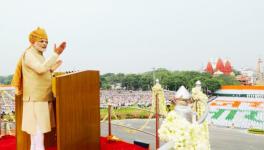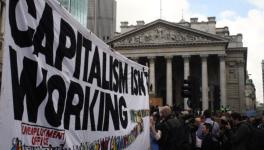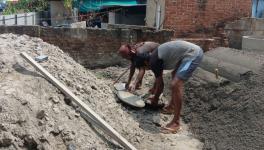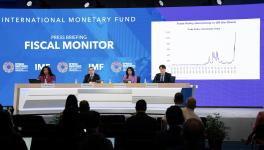Economic Recovery a Myth Unless India Takes Inclusive Path
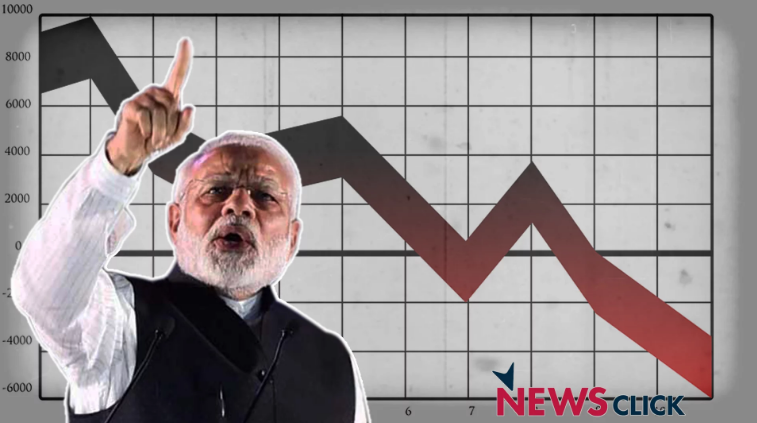
Is the Indian economy on the road to a strong recovery? The government believes so, even though the earlier confidence has dimmed somewhat after the outbreak of the Ukraine war and the related disruptions, including rising fuel prices. The official discourse is simple—the economy is sound, but a temporary disruption was caused by the pandemic and related restrictive measures. As this phase passes, the economy’s strength will assert itself in the form of robust growth. Right?
No, wrong. Unfortunately, such reasoning is too simplistic and ignores several serious problems, many specific to India. These problems existed even before the pandemic struck and have only worsened without adequate remedial action from the government.
For example, in November 2016 came a big blow to several employment-intensive sectors of the economy when India put currency notes of Rs. 500 and Rs. 1,000 denomination out of circulation. With 86% of the currency withdrawn in one big hammer blow, which we know as demonetisation, supply and demand were in shock for months. There was a massive decline in regular economic activity, and job losses zoomed, particularly in the unorganised and small-scale sector. In particular, the manufacturing and retail sectors suffered blows, but even agriculture was hit, given the dependence on cash to source inputs and conduct daily transactions.
Sales of consumer durables and appliances fell in November-December 2016 by 40%, as purchasing ability of consumers fell in the aftermath of demonetisation. The withdrawal of currency was even more ill-timed as the small-scale sector was facing a credit-related crisis due to the less-than-helpful policies of the government.
Even three years later, a 2019 survey found 66% of people cited the negative impact of demonetisation. In the survey, 33% blamed demonetisation for the slowdown in the economy, 66% judged it a negative factor.
Instead of adopting adequate measures to undo the harm inflicted on the unorganised and informal sectors, the government struck a second blow by suddenly introducing GST without proper preparation. The current form of the Goods and Services Tax regime is unsuitable for Indian conditions. In India, most employment is generated in the unorganised sector and further within the small-scale sector. This kind of taxation was tough to cope with for smaller players.
In mid-2018, a study of the Reserve Bank of India (RBI) stated that the micro, small and medium enterprises (MSME), which account for 45% of manufacturing, 40% of exports and 30% of GDP, witnessed two major recent shocks. These were demonetisation and the introduction of GST. This study said that the GST regime had raised compliance and operating costs for MSMEs.
We know many informal sector units have closed, and the business space vacated by them is increasingly getting occupied by big businesses, which tend to employ fewer people and rely more on automation and technology.
These trends were still manifesting themselves when the pandemic struck two years ago, and the Indian authorities resorted to some of the most stringent lockdowns in what is still considered a controversial policy response. The impact of the response gets reflected in the alarmingly high levels of unemployment. According to the Periodic Labour Force Surveys, youth unemployment had snowballed to 34.7% in the April-June quarter of 2020. Even when the situation somewhat eased, unemployment remained higher than usual, and when COVID-19 cases rose again in 2021, more lockdowns again pushed unemployment up. Across India, youth unemployment in urban areas rose to 25.5% in the April-June quarter of 2021. It remained in the double digits for quite long after that.
In mid-2020, the Centre for Monitoring Indian Economy also reported how the economic recovery did not include salaried jobs. Further, a study in June 2020 by the Centre for Sustainable Employment in the same year found that the lockdown left 66% of workers jobless. It is important to note that the lockdown caused acute unemployment and loss of income, but the earlier devastations of demonetisation and GST also contributed to the crisis. The small-scale sector has been in near-continuous turmoil since 2015. The pandemic exacerbated its problems.
Another factor—which precedes this decade or the last—is the growing inequality in India. It is perhaps India’s most significant obstruction on the road to recovery. Oxfam’s recent World Inequality Report highlights how economic disparities in India were intolerably high during colonial rule. After independence, inequalities decreased significantly for several years. But during the 1990s, a new phase began in the name of economic reforms. Under this system, reforms and inequalities have only intensified, and we are close to the colonial times regarding disparities. The bottom 50% of the population has access to only 6% of the country’s wealth and 13% of total income. India is now grouped among countries with the highest inequality in the world.
Inequality is not just a matter of income and wealth but includes a wide range of metrics that influence life at every stage. High inequality means that most of the population lacks the foundational assets needed to realise its potential. Mainly, that indicates a lack of access to education or skills. Lack of purchasing power also deters economic progress. In other words, a stable and broad base for sustainable development does not exist in India. If the government adopts policies that harm sectors where most workers from the bottom half work or relatively low-resource entrepreneurs seek upward mobility, this base gets even narrower.
In agriculture, when a government adopts an increasingly corporate-driven agenda, farmers get burdened by more expensive technologies and inputs while big companies get bigger, garnering an ever-increasing share of the economic pie. Any debate on economic recovery should be seen in this context of whether we are reducing distress, ensuring employment and creating a stable and robust base for economic recovery. The most critical question is not short-term growth rates or even recovery speed. Above all, whether the growth is inclusive or not and provides adequate opportunities for the poorer and weaker sections matters most. The Indian economy suffers from severe weaknesses in this context, which hinders the path to stable and sustainable development.
In the short run, India also has to contend with immediate economic disruptions caused by the Ukraine war. But during any difficulty, India can decide in favour of inclusive growth. If the government fails to respond to this urgent need for a bold new pro-poor agenda, the opposition parties should unite to propose one instead.
The writer is honorary convener, Campaign to Save Earth Now. His recent books include ‘Man over Machine’ and ‘India’s Quest for Sustainable Farming and Healthy Food’. The views are personal
Get the latest reports & analysis with people's perspective on Protests, movements & deep analytical videos, discussions of the current affairs in your Telegram app. Subscribe to NewsClick's Telegram channel & get Real-Time updates on stories, as they get published on our website.










